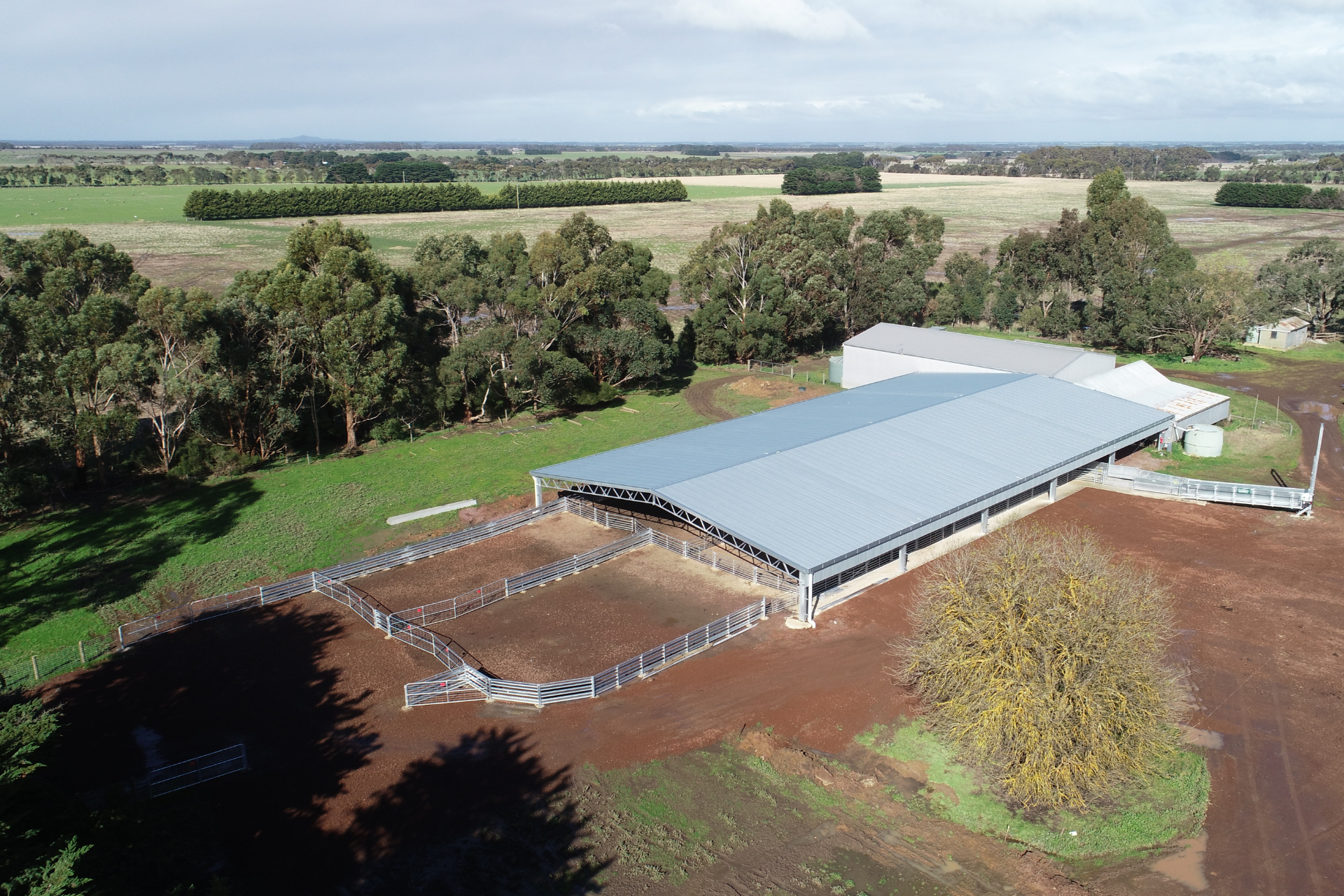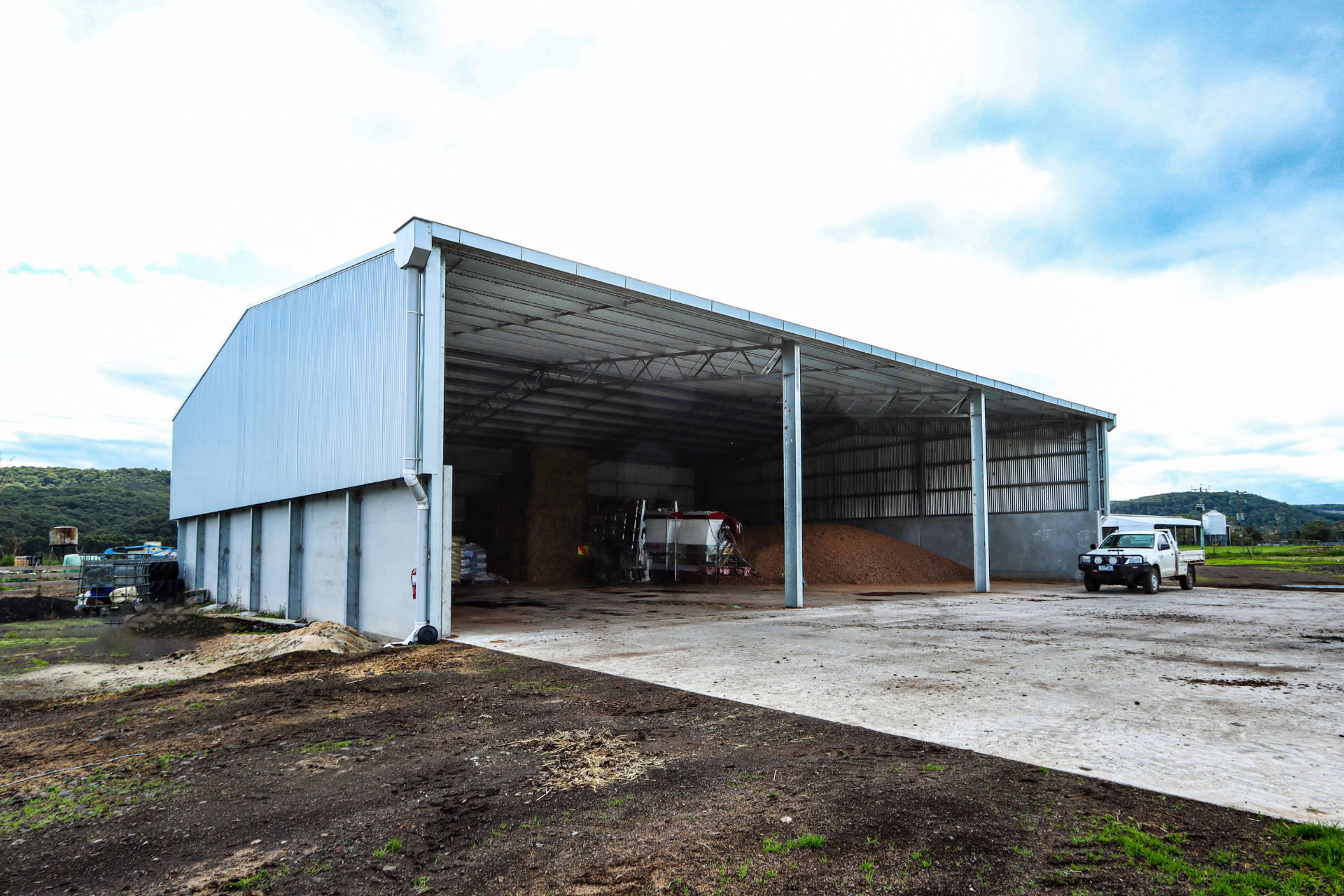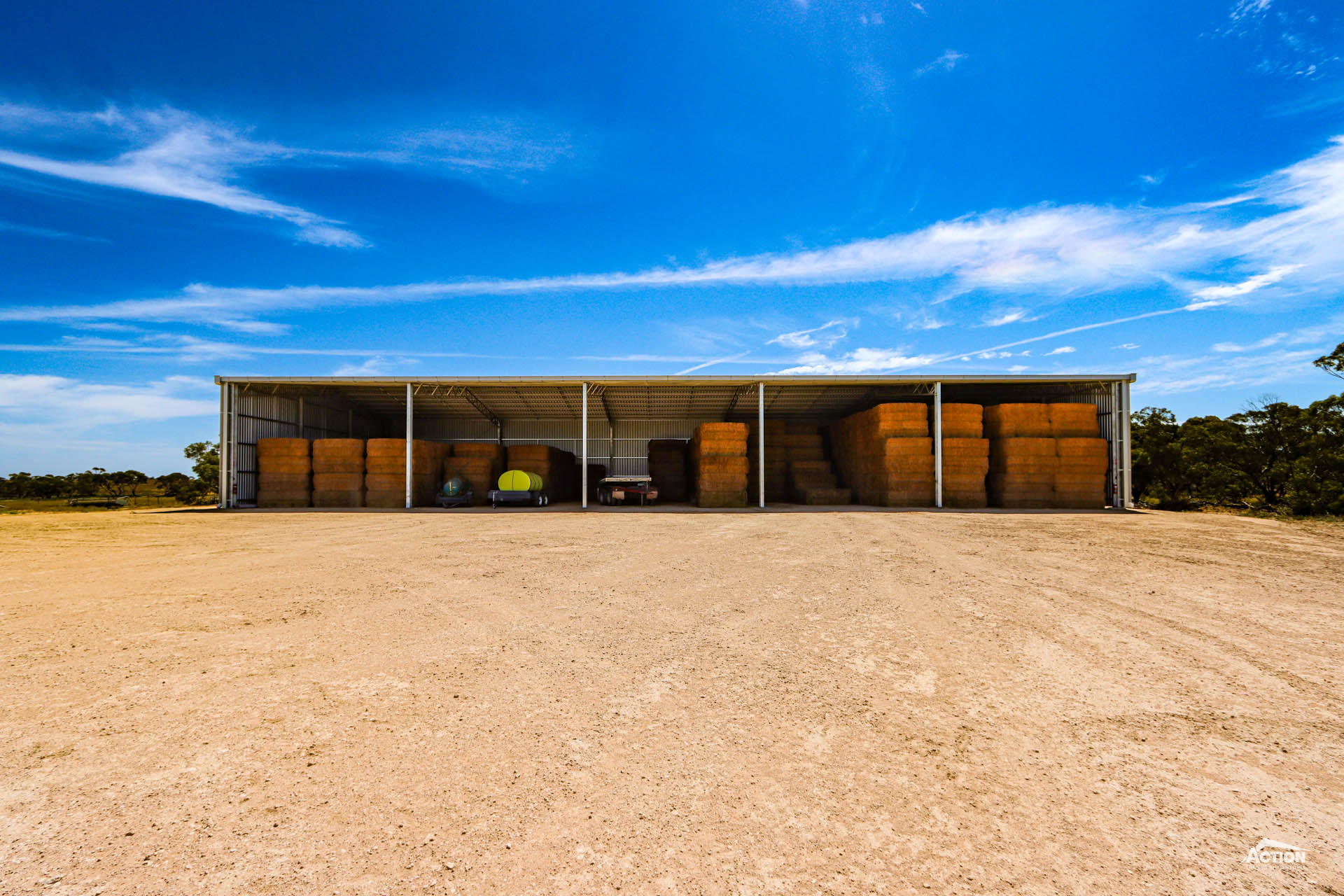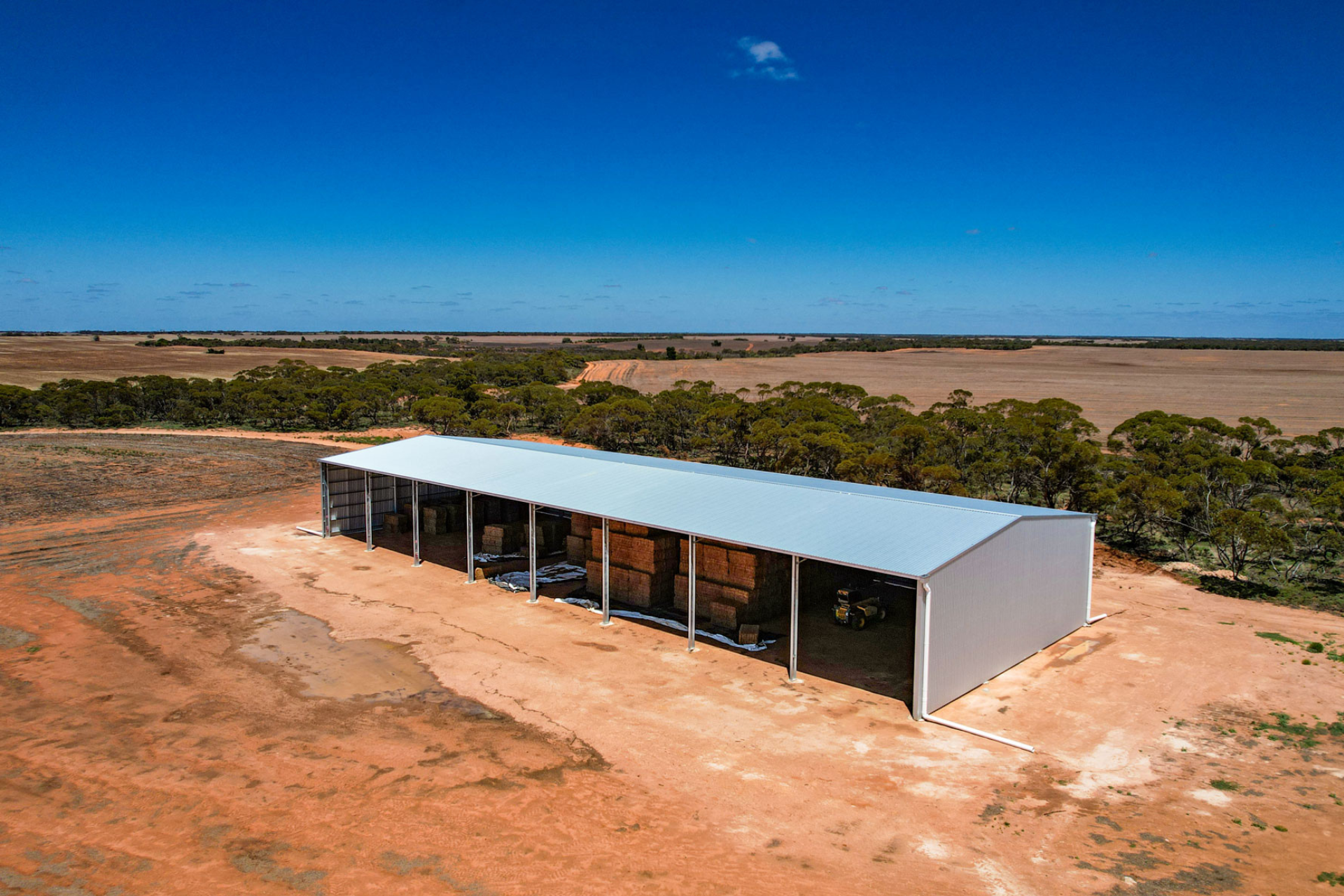Wondering about the cost to cover sheep yards? Asking, how much does it cost to build a sheep yard cover? Then, keep reading! This article discusses yard cover design ideas, popular sizes and most importantly, the cost to build a cover over your sheep yards.
There has been an noticeable increase in the popularity of yard covers for both sheep yards and cattle yards over the past three to four years. In 2021, for example, the team at Action Steel built more than 80 yard covers, primarily in western Victoria and south-east South Australia. 2022 is looking to be no different with the trend continuing, and nearly 40 yard cover projects currently underway – including some exciting projects in southern New South Wales.
The increase in covered yards can be attributed to a number of contributing factors, with some of the main reasons including:
- Providing improved working conditions for staff to help retain existing staff and attract new talent – an important consideration given current labour shortages.
- A strong industry and consumer focus on animal comfort and welfare.
- Improved productivity and flexible working hours.
If you are also looking to reap the many benefits of covered sheep yards but are wondering how much it costs to cover sheep yards – or would like to know what is the most cost-effective way to build a yard cover – then you can use this article as a starting point for your budgeting.
Our building consultants have analysed hundreds of sheep yard cover projects to determine average costs, cost-effective designs, potential savings and areas where you shouldn’t skimp.
Let’s get straight to the point with – How much does it cost to build a sheep yard cover?
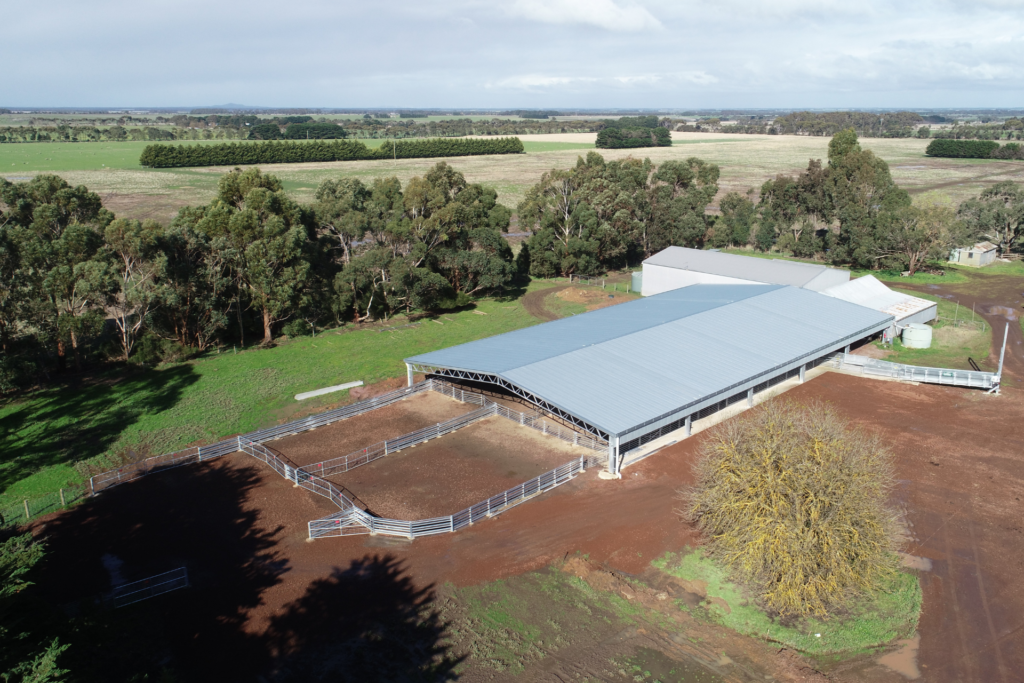
Cost To Build A Sheep Yard Cover
A sheep yard cover generally costs between $100,000 – $130,000 including erection, footing concrete and GST. Keep in mind though, that this price range is based on the average cost of sheep yard covers built over the past twelve months, so it does encompass a wide range of projects and yard cover sizes.
To provide a more accurate representation of how much you can expect to pay for a sheep yard cover, here are some popular sizes for sheep yard covers and their approximate price ranges. Note, these price estimates include erection costs, footing concrete and GST.
- A 32m x 18m x 3.5m sheep yard cover would cost approx. $75,000 – $100,000
- A 48m x 24m x 4m yard cover with a gable infill would cost approx. $150,000 – $185,000
- A 36m x 32m x 4m yard cover with a gable infill and partially clad walls would cost approx. $180,000 – $230,000
- A 28m x 24m x 3.5m yard cover with a gable infill and partially clad walls would cost approx. $95,000 – $125,000
- A 34m x 27m x 4.2m yard cover with a gable infill would cost approx. $120,000 – $150,000
As you can see from these examples, the price of a yard cover varies and depends on the size, location and design features included in the cover. Generally, there are three main factors that influence how much your yard cover costs – these are discussed below.
Factors That Influence Yard Cover Prices
What makes a yard cover more expensive? How can I save money on my yard cover project?
These are both good questions to consider in the budgeting stage of your yard cover project, and it is also important to understand what influences prices so that you don’t get caught short or go over budget.
The three main factors that influence prices are: the size of the yard cover, the materials used and custom features included.
Let’s start with size.
1. Yard cover size
This one is fairly self-explanatory – the bigger the yard cover, the more materials and labour that is required for the project, therefore meaning a higher price.
However, size is one detail we don’t recommend skimping on. The height of the yard cover and coverage of the yards are particularly important.
Choosing the right height for your sheep yard cover can help ensure there is adequate access to the cover and airflow through the cover while still providing shelter from the weather. The most common heights for sheep yard covers are 3 metres to 3.5 metres, however heights of around 4 metres with partially clad walls or gable infills on the cover are also becoming popular.
When it comes to the coverage over your yards, to get the most out of your cover, we recommend allowing an extra metre of so coverage on each side (if the site allows) to provide the best weather protection over your yards.
2. Materials
The cost of materials directly impacts the cost of the project. This includes the price of structural steel, hot-dip galvanising the columns and trusses and the cladding you choose to use.
Our yard covers are made from heavy-duty UB columns and open web trusses. So the cost to build a sheep yard cover is influence by the steel market.
You can learn about 2023 steel prices in this article – Are Steel Prices Decreasing?
And in the case of steel price rises, we negotiate with our steel suppliers, buy in advance and hold more stock of steel to help keep these prices down.
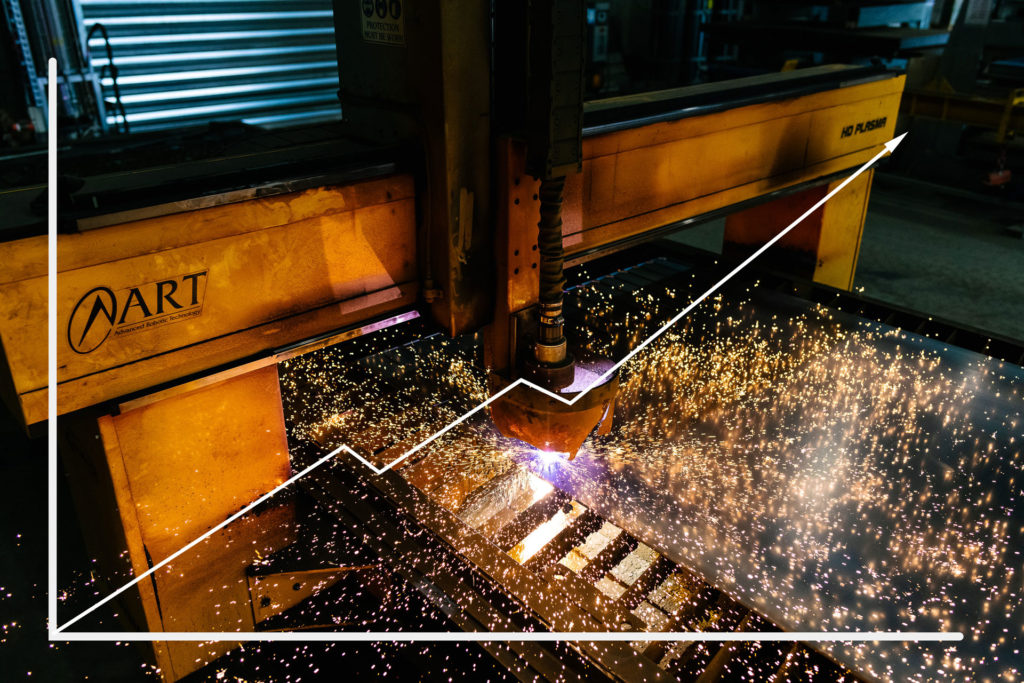
When comparing quotes and prices, take into consideration steel coatings and corrosion protection. All our sheds are fully hot dip galvanized after manufacture (both the columns and trusses) which means they do generally cost more than painted alternatives. However, we hot-dip galvanize our sheds because it provides the ultimate corrosion protection, protecting the steel in three ways – something that a painted or pre-galv coating will not achieve. You can read why we recommend avoiding purchasing a shed with painted or pre-galv columns or trusses in these articles:
Why should I avoid a shed with painted columns? What is the difference between pre-galv and hot-dip galv coatings?
The other material cost to consider is the cost of cladding, more specifically the cost of zinc cladding compared to Colorbond cladding. Zinc cladding is the less expensive option and is used for the majority of farm shed builds. You may want to consider Colorbond cladding if you are building near the coast for additional protection from rust, or if you want to match in with any existing infrastructure.
3. Customising your project
The third main factor that will influence the cost of your yard cover project, is how you choose to customise your yard cover.
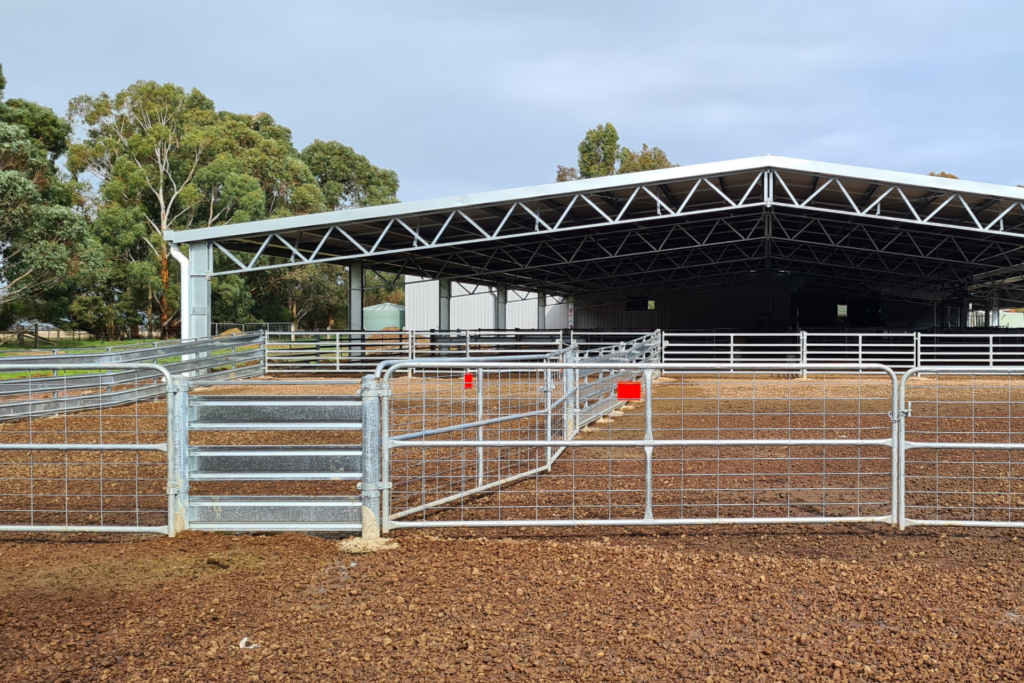
Customisation options and design features that you could include in your yard cover project are gable infills, partially clad walls, custom signage, custom gutter systems, skylights and hi-bay lights. Each of these options will incur more material and labour costs, making the yard cover more expensive.
But it is important to think big picture!
Many of these additions will help you get the most out of your covered yards. For example, installing hi-bay lights mean that you can work undercover at any time of the day – and in any kind of weather, making your work routine much more flexible.
You can learn more about the benefits of good lighting in this video.
Similarly, installing a custom gutter system can allow you to make the most of any rainfall by capturing the run-off from the roof. You can find out how much stormwater your planned project could capture by using our rainwater catchment calculator, here.
So, that’s a general overview of how the price of a yard cover can be influenced by size, materials and design. Other factors that may come into play include the location of the shed, permit costs and any project complexities such as building the cover to work in with existing infrastructure like a shearing shed.
Now that we understand the ways project costs can be influenced, let’s look at cost-effective design options and potential cost savings.
What is the most cost-effective design? What can I do to reduce costs?
When it comes to ensuring your yard cover design is cost-effective, the first thing we suggest is to choose one of our standard spans.
Our standard spans have been carefully researched and designed over the years to suit agricultural sheds and buildings such as yard covers and choosing one of these spans can make a significant difference to the cost-effectiveness of your project. Standard span sizes include 15 metres, 18 metres, 21 metres, 24 metres and 27 metres, 30 metres and 36 metres (larger spans up to 60 metres clear span are also available) and we recommend choosing one of these – where practical, of course! We understand that if you are building over existing yards or working in with other sheds nearby that these spans may not always work.
Ask one our building consultants to show how these standard spans translate to a more cost-effective design – we are always more than happy to quote a number of different options to ensure the best outcome for you.

Other ways that you could save money on your project include arranging the footing concrete and construction of the project yourself or doing a two-stage project where walls are clad in the future.
The most important thing is to make sure that the design works. Poor design is expensive!
There is no point in covering your sheep yards if the cover is too low, too high or column placement interferes with the yards. This is why we pay attention to detail, working in with yard suppliers (ProWay, Tepari and Atlex are some of the suppliers we work with) and take the time to measure out sites.
If you are worried about any of these design issues, talk to us to find out how we can avoid them and ensure every detail is addressed. For example, we often adjust column lengths to suit the fall over the yards or vary bay spacings to work in with the yard design.
If you would like to see how we build yard covers or would like ideas and inspiration for your yard cover project, download our latest yard cover brochure.
We hope you have found this article helpful! For more articles like this as well as the latest videos and brochures, browse our Learning Hub.
Disclaimer: The prices included in this article are approximates and are indicative costs only – and are subject to change. This article is only to be used as a budgeting tool, for a more accurate costing, please request a formal quote.

